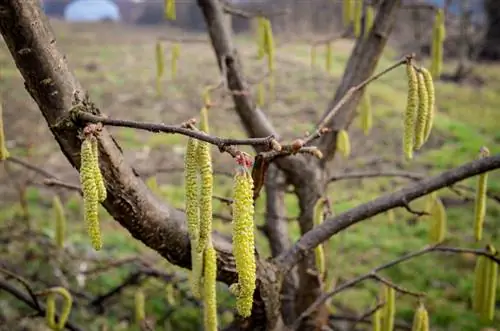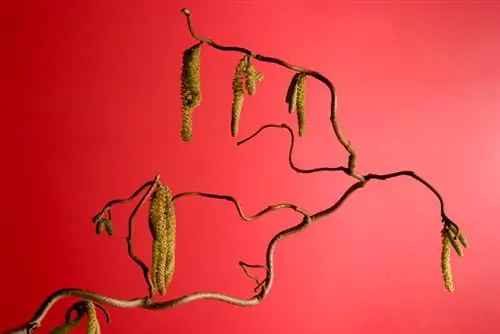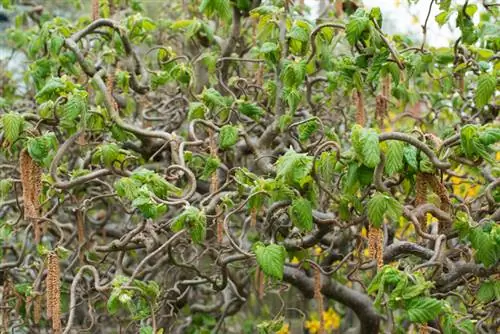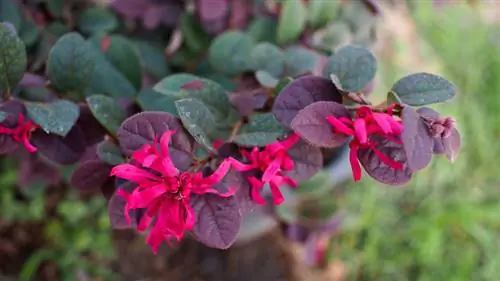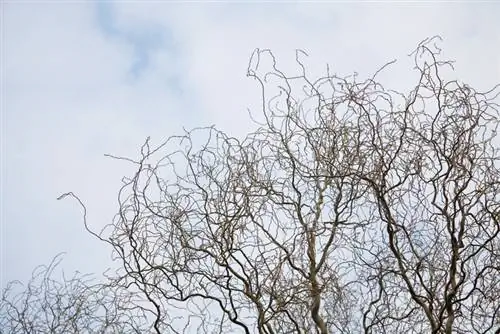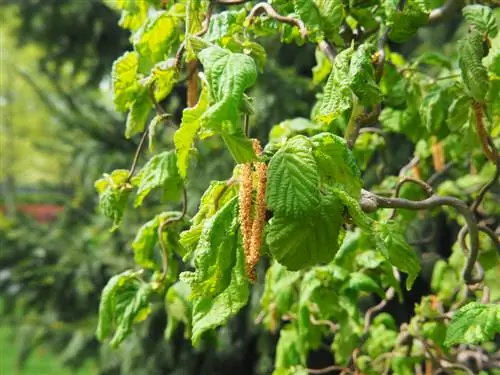- Author admin [email protected].
- Public 2023-12-16 16:46.
- Last modified 2025-06-01 06:02.
If you have ordered your corkscrew hazel to change location, the tree will face a stressful process. The timing is just as relevant as the approach. Read here how to skillfully transplant a Corylus avellana 'Contorta'.
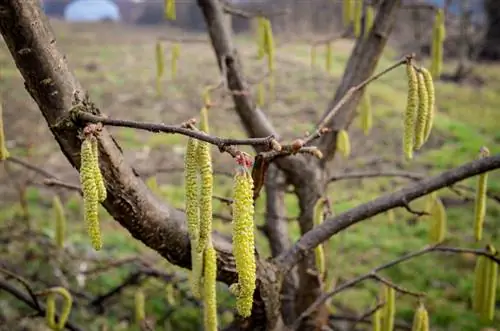
How should you successfully transplant a corkscrew hazel?
To properly transplant a corkscrew hazel (Corylus avellana 'Contorta'), choose a frost-free, overcast day after the leaves have fallen, cut the root ball two-thirds of the way up and create a prepared planting pit at the new location. Plant the hazel at the previous planting depth and prune to even out the growth.
Criteria for the best appointment
With a strong heart root system, a corkscrew hazel establishes itself vehemently in its location. It is obvious that moving to an alternative location for the tree is associated with a high level of stress. The time for transplanting should be chosen carefully. How to choose the optimal date:
- The tree has shed all of its leaves
- The weather is frost-free and overcast
- The corkscrew hazel is not older than 5 years
The age limit of 5 years applies to a plant in the open field. Transplanting older bushes is generally possible; However, there is a high risk of failure. If the ornamental tree thrives in a container, transplanting is always on the agenda when the container is completely rooted. This requirement applies regardless of age.
Transplanting corkscrew hazel - How to do it right
On the chosen date, start the transplanting work by cutting off the root ball all around with the spade (€29.00 at Amazon). The radius corresponds to about two thirds of the height. Then use the digging fork to loosen the root ball to lift it out of the ground with as much soil as possible.
At the new location you have already created a planting pit in advance with twice the volume of the root ball. The excavation was enriched with compost and sand. While maintaining the previous planting depth, insert the corkscrew hazel, tamp down the soil and water generously. Until the shrub has rooted, a support rod prevents unwanted wind throw.
Pruning compensates for lost root mass
After you have planted a corkscrew hazel in the new location, you can easily estimate the amount of root mass that has been lost. Now cut the ornamental shrub back so far that the balance between above-ground and underground growth is restored.
Tip
Unlike its big brother, the common hazel, a corkscrew hazel rarely produces nuts. At an advanced age and with good care, with a little luck you can still harvest some of the nuts. Despite their small size, hazelnuts are still edible.

